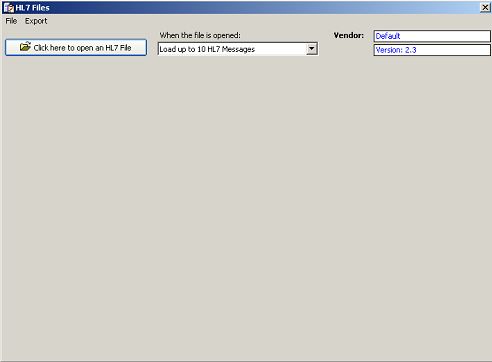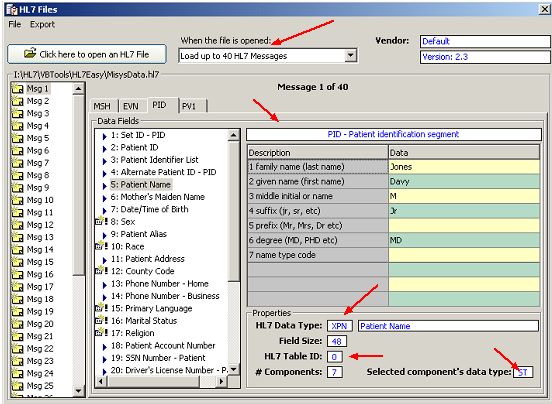Object: EHL7Interface.eUtilities
FileName: EHL7Interface.dll
Method
Name: OpenFileManager()
Parameters:
1. VendorID (optional string, default "") identifying the vendor definition files to use
2. OpenMode (enumerator optional default 0) one of the following:
| • | eDefault = 0 |
| • | eOpenHL7File = 1 |
| • | eOpenXMLFile = 2 |
| • | eOpenHL7String = 3 |
| • | eOpenXMLString = 4 |
3. strFileNameOrData (optional string, default "") string containing either a filename OR a string (containing either HL7 or XML data).
4. nMaxItems(optional Long = 0) The maximum number of messages to load. <= 0 indicates ALL
Returns: N/A
Description: Shows the built-in EasyHL7 HL7 file viewer. If you have previously set the VendorID property it is not necessary to provide it as a parameter.
Example1:
Private Sub ShowFiles(strVendorID As String)
'Opens the file manager in 'Browse Mode'
'This is the same as clicking the Work with HL7 Files button in easyhl7.exe
Dim myInterfaceObj As New EHL7Interface.eUtilities
myInterfaceObj.ClearErrors
If Not myInterfaceObj.OpenFileManager(strVendorID)
MsgBox myInterfaceObj.LastError
myInterfaceObj.ClearErrors
Set myInterfaceObj = Nothing
Exit Sub
End If
Set myInterfaceObj = Nothing
End Sub

Example 2:
Private Sub ShowHL7File(strVendorID As String,strFileName As String)
'Opens the file manager for the selected vendor and loads an HL7
'File automatically up to the first 40 messages
Dim myInterfaceObj As New EHL7Interface.eUtilities
Dim myOpenMode As HL7FileOpenMode
myOpenMode = eOpenHL7File
myInterfaceObj.ClearErrors
If Not myInterfaceObj.OpenFileManager(strVendorID, strFileName, myOpenMode, 40)
MsgBox myInterfaceObj.LastError
myInterfaceObj.ClearErrors
Set myInterfaceObj = Nothing
Exit Sub
End If
Set myInterfaceObj = Nothing
End Sub
